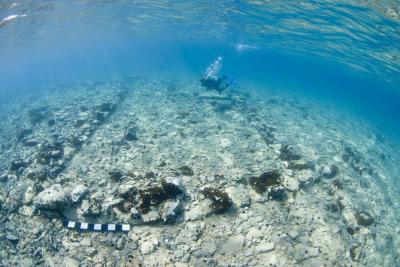 Discovered over 40 years ago just off the coast of Greece, Pavlopetri is the oldest submerged city in the world and the only sunken city in Greece that predates the writing of Plato’s Atlantis myth.
Discovered over 40 years ago just off the coast of Greece, Pavlopetri is the oldest submerged city in the world and the only sunken city in Greece that predates the writing of Plato’s Atlantis myth.
Now, for ‘Pavlopetri, The City Beneath the Waves’, BBC Two is to follow the team of experts excavating the submerged site.
“The future of archaeology is under the water and we are now armed with the technology to unlock the countless fascinating secrets the sea is yet to yield up to us, says BBCTwo’s Janice Hadlow.
The documentary is planned to air next year, and will make extensiveuse of CGI (3D computer generated images) to show for the first time in 3,500 years, how the mighty city of Pavlopetri now five metres below the sea level must have once looked.
The underwater city of Pavlopetriwas discovered in 1967, off the coast of southern Laconia in Greece. It is about 5000 years old.
So far, evidence for inhabitation during the late Bronze Age, middle Minoan and Mycenaean periods has been found at the 30,000 square meters archaeological site.
Pavlopetri is unique in having an almost complete town plan, including streets, courtyards, more than 15 buildings, two chamber tombs and at least 37 cist graves.
Although eroded over the centuries, the town layout never built over or disrupted by agriculture is as it was thousands of years ago.
It is believed that the ancient town sank at the end of the Mycenaean period, around 1000 BC yet it remains unknown what caused this. Possibilities include sea level changes, earthquakes, or a tsunami.
‘Pavlopetri The City Beneath the Waves’ will show the archaeology team using the latest in cutting-edge science and technology to prise age-old secrets from the complex of streets and stone buildingsthat wasmapped in last year’s survey. (Video from the 2009 Pavlopetri Expedition.)
The team is led by the University of Nottingham’s Dr Jon Henderson. Working alongside the underwater archaeologist on this ground-breaking project will be Nic Flemming, the man whose hunch led to the intriguing discovery of Pavlopetri in 1967, and teams from the Hellenic Ministry of Culture and the Australian Centre for Field Robotics.